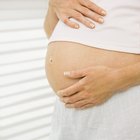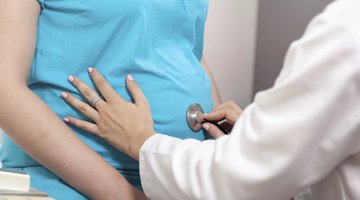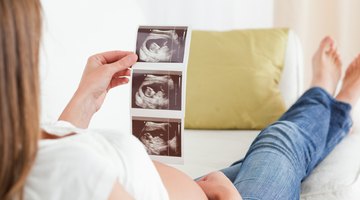43 and Trying to Get Pregnant
A woman who wants to become pregnant at age 43 in the U.S. is not alone. The Centers for Disease Control and Prevention reports that 9.9 out of every 1,000 women between 40 and 44 years of age delivered a child in 2008.
The decision to conceive, carry, deliver and nurture a human being well into adulthood has serious consequences at any age, but at 43 additional challenges are present before and after conception.
Who's Attempting Conception at 43
The term used by obstetricians for women over age 35 who are conceiving for the first time is elderly primipara, yet the 43-year-old in 2010 may feel anything but elderly. She has likely completed some college, if not one or more degrees, built a professional career and either married late in life or chose not to marry, according to the Pew Research Council.
Infertility Rates at 43

At How Many Weeks Pregnant Can You Find Out a Baby's Gender?
Learn More
The chance of a 40-year-old woman conceiving through intercourse in a given month drops to 1 percent at age 43, according to the Association for Reproductive Medicine. In addition, fertility in men declines 3 percent per year after after age 24, according to researchers from Bristol, England in the August 2000 issue of "Human Reproduction," so an older couple will compund their infertility risks.
Preconception Health
For women over age 40, bringing their own health to its optimal level before conception is the best way to help prevent some of the complications associated with a later pregnancy. The ACOG recommends achieving achieving a body mass index of less than 25, and ensuring that lab studies and blood pressure are within recommended levels before attempting conception.
Mammograms are recommended every one to two years for women over 40, and infertility medications increase the risk of a cancer developing. Therefore, it's wise to have a mammogram before conceiving.
Any medications or over-the-counter products should be discussed, in detail, with the obstetrician to decide if the medicine is necessary and safe during pregnancy and breastfeeding. Then vaccination records need to be checked along with those of the father to make sure both parents will be up to date when the child is born.
Finally, starting prenatal vitamins three months before trying to conceive lowers the risk of neural tube defects.
Assisted Fertility Techology

Can You Get Pregnant at 58 Yrs Old?
Learn More
AFT is how almost all women age 43 in the U.S. conceive. In vitro fertilization is the conception of embryos outside the body, either with the woman's own eggs or a donor's eggs. Past age 41, the use of a donor egg is normally advised. This eliminates the increased risk of breast cancer associated with hyperstimulating a woman's own ovaries.
In vitro using the eggs of a woman over 42 only results in an 8.8 percent chance of conception and a 6.8 percent chance of live birth per transfer, according to the Society for Assisted Reproductive Technology, or SART. Using a donor for the source of the eggs increases the chances of success to between 37 and 50 percent.
Genetic Disorders
According to ACOG statistics, the risk of conceiving a child with a chromosomal abnormality at age 43 is 1:33 compared to a risk of 1:356 at age 20 and 1:192 at age 35. The diagnosis of a genetic disorder allows parents to deliver in a high-risk setting and to prepare emotionally for their child's delivery, but medicine cannot cure Down syndrome or any of the other chromosomal disorders, and the majority of parent's facing the diagnosis of a serious birth anomoly will elect to terminate the pregnancy, according to the ACOG.









